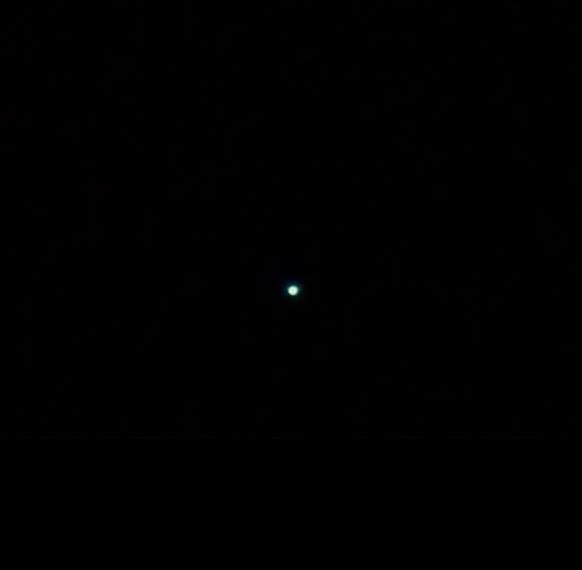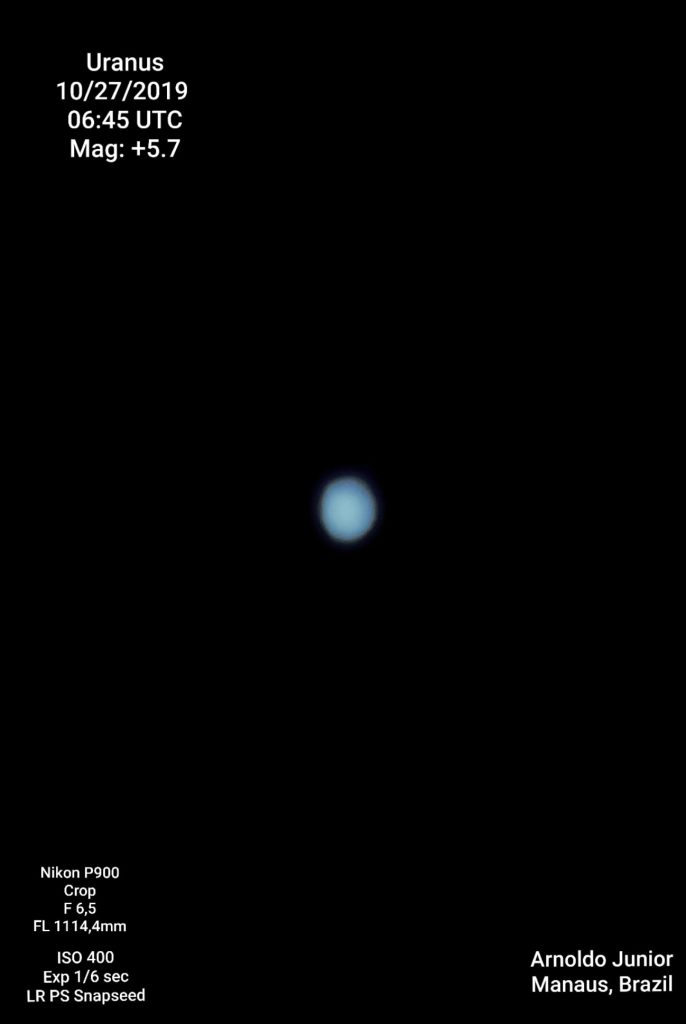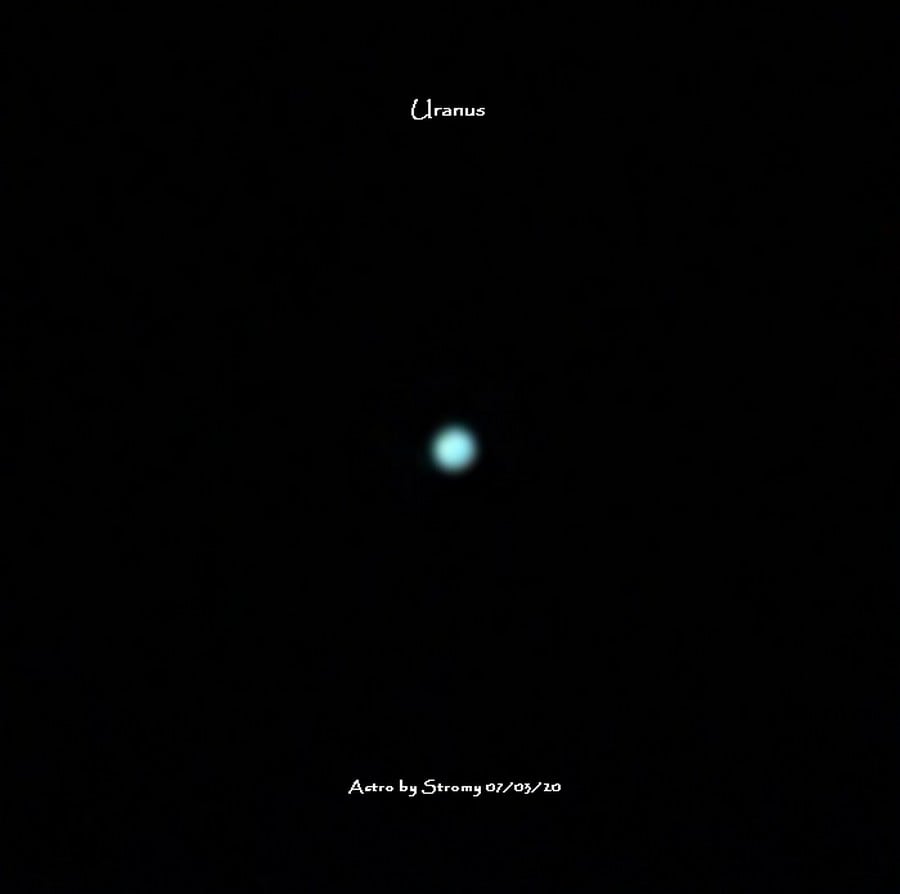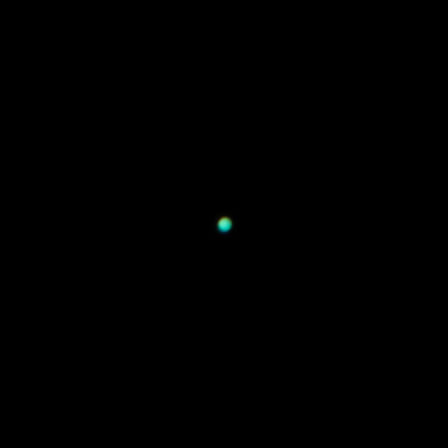Can you see Uranus with a telescope?





Uranus can be seen with a telescope, and the view improves as aperture increases.
A 60 mm scope will resolve it, yet a 6-inch (15 cm) instrument already shows the planet clearly. Through an 8-inch (200 mm) lens Uranus appears as a tiny aqua-colored dot.
Even a backyard telescope brings the ice-giant within reach, and binoculars make locating it easy before switching to higher power.

Can you see Uranus with a telescope?
You can see Uranus with a telescope. Uranus will appear as a featureless greenish dot through finder optics. A small telescope reveals the Uranus disk as a very tiny aqua-blue disc whenever skies are calm. At 50x magnification the planet looks visibly fuzzy. At 100x the bluish tint sharpens into a blue-green hue, and with larger aperture telescopes experienced observers have resolved Uranus’ cloud bands. Although the faint rings will not be visible, several of Uranus’ moons can be seen with a large telescope. For observers, the best opportunity for viewing comes when Uranus shines its brightest between October 11 and December 17.

Can we see Uranus without a telescope?
Uranus is challenging to see without a telescope. Uranus is on the edge of visibility to the naked eye with a magnitude of +5.7. The planet never fades below the sixth-magnitude limit. Because Uranus sits right at the threshold of naked-eye visibility, it can be glimpsed without optical aid only under very dark, clear skies. Owners of keen eyesight who travel far from city lights sometimes record the planet as a faint, steady speck among the stars, while urban observers cannot detect it through light pollution. French astronomer Pierre Charles Le Monnier observed Uranus twelve times between 1750 and 1769, proving that careful scanning can yield a sighting. Although the ancient Greeks and Romans noticed Saturn easily, they never noticed Uranus. From the viewpoint of raw visibility, Uranus is the sixth planet that can be spied without telescopes. In practice, the planet’s faint, star-like appearance demands ideal conditions and familiarity with the night sky.
What telescope do you need to see Uranus?
You’ll need a telescope with an aperture of at least 4 inches (10 cm) to see Uranus. Under calm skies, 150x magnification is enough to reveal the planet’s very tiny aqua-blue disc. A 6-inch instrument shows the planet as a tiny, featureless, slightly ellipsoidal disk, while an 8- to 10-inch aperture gives the best chance of detecting subtle surface details and resolving faint cloud bands. Larger amateur telescopes let the five brightest moons – Ariel, Umbriel, Titania, Oberon, and Miranda – appear as points of light around the planet’s disk. Titania and Oberon are the easiest to spot, whereas Ariel and Umbriel challenge even an 8-inch scope. Small telescopes or 60 mm (2.4 inch) refractors will reveal the blue-green hue at 100x, but for consistent, detailed views, choose at least 6 inches (152 mm) and push the magnification toward 200x.

How to see Uranus through a telescope?
To see Uranus through a telescope, follow the steps explained below.
- Observe Uranus at 50x magnification or more to see it appear visibly fuzzy
- Use the highest-power eyepiece available to resolve its disk more clearly
Swap in the highest-power eyepiece the night’s air will bear. With more magnification the fuzzy disk begins to harden, letting its tiny pale-green face stand out against the sky. Our restless atmosphere sometimes tints this disk a yellow-green, but steadier moments will show the true hue, confirming you have captured the seventh planet.
